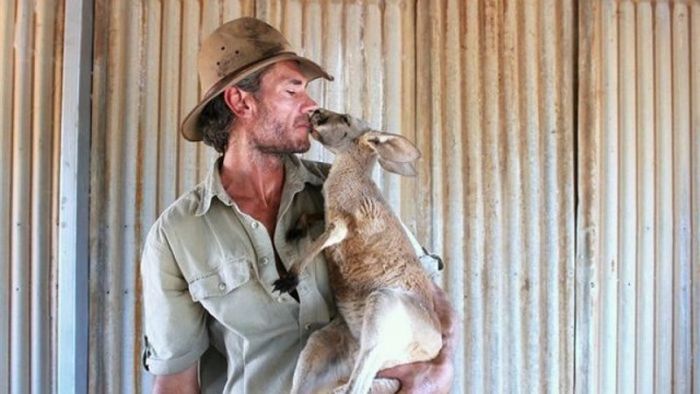|
|
Rescuing Kangaroos, Kangaroo Dundee, Chris Brolga Barns
|
Kangaroos and wallabies have large, elastic tendons in their hind legs. They store elastic strain energy in the tendons of their large hind legs, providing most of the energy required for each hop by the spring action of the tendons rather than by any muscular effort. This is true in all animal species which have muscles connected to their skeletons through elastic elements such as tendons, but the effect is more pronounced in kangaroos.
There is also a link between the hopping action and breathing: as the feet leave the ground, air is expelled from the lungs; bringing the feet forward ready for landing refills the lungs, providing further energy efficiency. Studies of kangaroos and wallabies have demonstrated, beyond the minimum energy expenditure required to hop at all, increased speed requires very little extra effort (much less than the same speed increase in, say, a horse, dog or human), and the extra energy is required to carry extra weight. For kangaroos, the key benefit of hopping is not speed to escape predators—the top speed of a kangaroo is no higher than that of a similarly sized quadruped, and the Australian native predators are in any case less fearsome than those of other countries—but economy: in an infertile country with highly variable weather patterns, the ability of a kangaroo to travel long distances at moderately high speed in search of food sources is crucial to survival.
New research has revealed that a kangaroos tail acts as a third leg rather than just a balancing strut. Kangaroos have a unique three-stage walk where they plant their front legs and tail first, then push off their tail, followed lastly by the back legs. The propulsive force of the tail is equal to that of both the front and hind legs combined and performs as much work as what a human leg walking can at the same speed.
A DNA sequencing project of the genome of a member of the kangaroo family, the tammar wallaby, was started in 2004. It was a collaboration between Australia (mainly funded by the state of Victoria) and the National Institutes of Health in the US. The tammar's genome was fully sequenced in 2011. The genome of a marsupial such as the kangaroo is of great interest to scientists studying comparative genomics, because marsupials are at an ideal degree of evolutionary divergence from humans: mice are too close and have not developed many different functions, while birds are genetically too remote. The dairy industry has also expressed some interest in this project.
|
|









